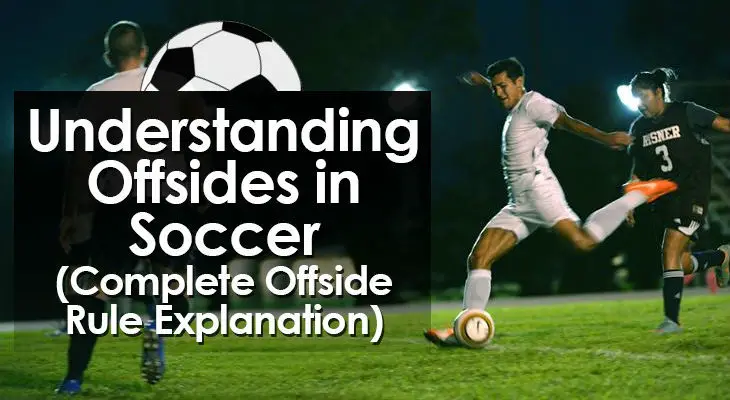Understanding Offsides in Soccer (Complete Rule Explanation)
Following the latest rounds of games each week, soccer fans around the globe descend into furious debate about whether a goal their team conceded was offside or not.
It’s an inevitable scene when it comes to offsides in soccer…
And it’s not just the fans either.
Even with strict penalties and punishments introduced to protect referees and their authority, you still see highlights showing players crowding the ref after the final whistle.
Imploring (or intimidating) them to rule out that one goal that will change the final score.
Even the teams’ coaches and managers get in on it.
And the ones at the end of the barrel are always the poor referees and their assistants…
There’s no doubt about it - the referee and linesmen have one of the hardest jobs in soccer.
They’re required to constantly make instantaneous, key decisions. Decisions that often completely alter the flow of the game and heavily influence the end result.
Errors are Unavoidable
Isn’t it reasonable that mistakes – even blunders – be made in such an environment?
Even with the intensive training and certification most professional referees must go through, there is always room for error.
And let’s not forget that the refs are, of course, human. And humans are prone to errors.
In recent years, officials and the ruling body FIFA have begun caving in and gradually introducing technological countermeasures.
Video Assistant Referee (VAR) is the latest to be widely adopted. But it’s still in its teething stages, with problems and mistakes of its own.
Even with all these technological aids, there will always be a human element to refereeing games. As there should be. The Beautiful Game entirely governed by machines? No thanks.
Consequently, though, there will always be room for mistakes in decisions.
And that’s especially true for offsides in soccer. The rule results in the most confusion, contention, and officiating errors in the game.
And it will likely continue to be so.
So, just what exactly is this offside rule in soccer?
And why on earth is it so seemingly complicated?
A Run-Through of the Soccer Offside Rule
The offside rule in itself is fairly straightforward…
A simple interpretation of it is that to remain onside an attacking player must:
1. Be in their own half of the field; or if they’re not
2. Have the ball played to them while they are level with the second-last defender; or
3. While there are at least two opposition defending players between them and the goal.
That’s not too hard to hard to understand, right?
The problem, however, is that like most difficult soccer terms, it's rarely ever that simple.
There are so many ways that an attack move can unfold that there are many nuances to the rule depending on what happens. And that’s why offsides in soccer become confusing.
What many people don’t realise is that being offside is different from committing an offside offence.
Let’s understand how…
The Difference between Being Offside and Committing an Offside Offence
Simply put, a player is said to be in an offside position only if:
1. They are in the opposing team’s half of the field
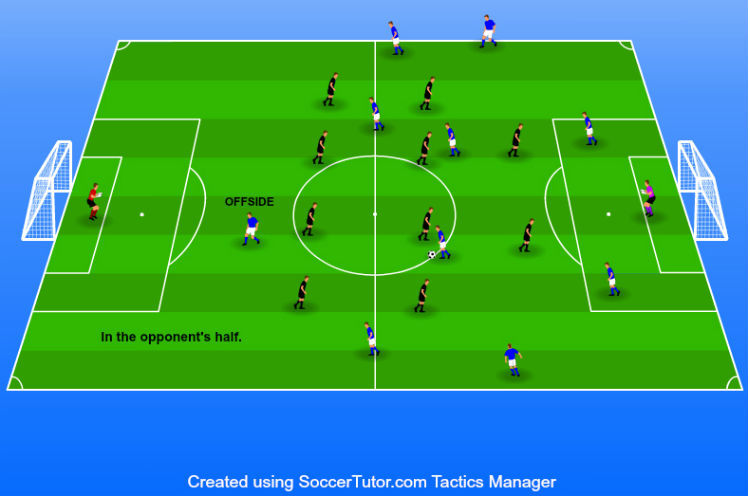
2. They are closer to the opponent’s goal line than both the ball and the opponent’s second-last player
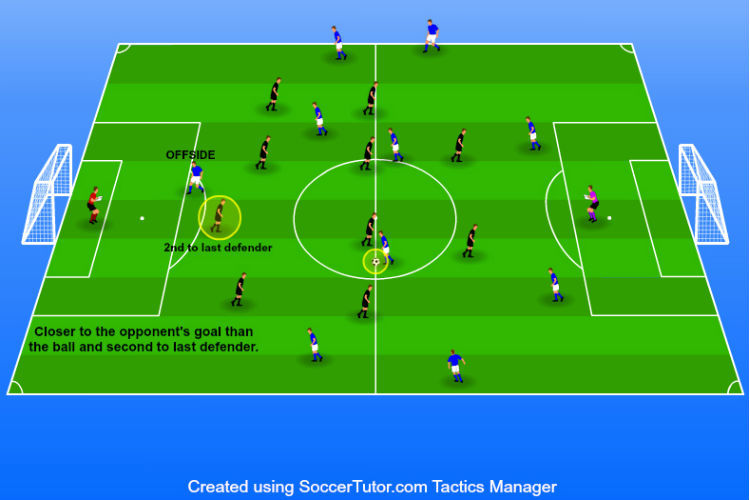
You should note that when talking offsides in soccer, by the attacking player one means any part of the player’s body with which they can play the ball legally, and not necessarily the whole player.
That means the rule is not concerned with their hands and arms.
So in light of that, this how you’d read the second point above:
If any part of the player’s body with the exception of the hands or arms is closer to the opposing goal line than the ball or the second last opponent – that player is offside.
Being in an offside position, however, doesn’t necessarily mean that you’ll be flagged offside.
For being flagged, a player should have committed an offside offence.
That happens only if at the time their own teammate touches or plays the ball a player in an offside position gets involved in the ongoing play either by:
1. Directly interfering with play – that means playing the ball in any way.
2. Interfering with an opponent – meaning if they do anything that could influence an opposing player’s move during the play.
How Players Can Interfere with Play
That second point is where a lot of confusion arises over decisions…
Interfering really means almost anything that can affect an opponent during play.
This includes things like:
• Simply blocking their line of sight – particularly that of the goalkeeper
• Obstructing their movement in any way
• Merely attempting to play the ball or challenge an opponent involved or even looking to be involved in the play
• Playing or attempting to play a ball deflected or rebounded off an opponent, any part of the opposing goal frame, or even the referee (provided the deflected or rebounded shot or pass was by a teammate)
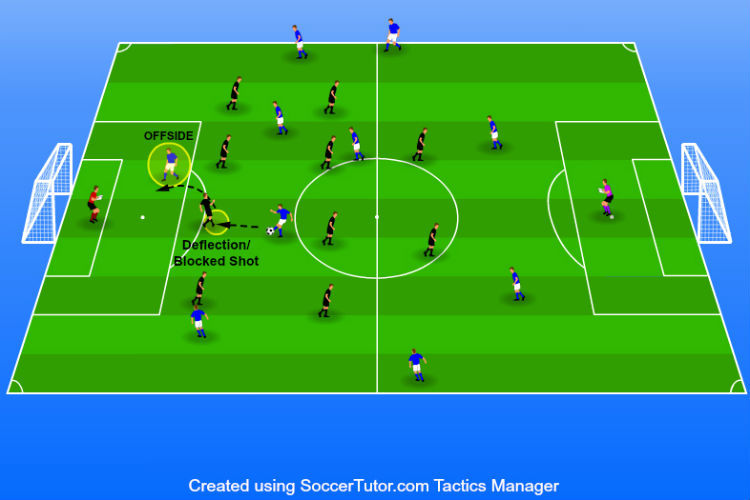
• Playing or attempting to play a ball after a deliberate goal save by an opponent
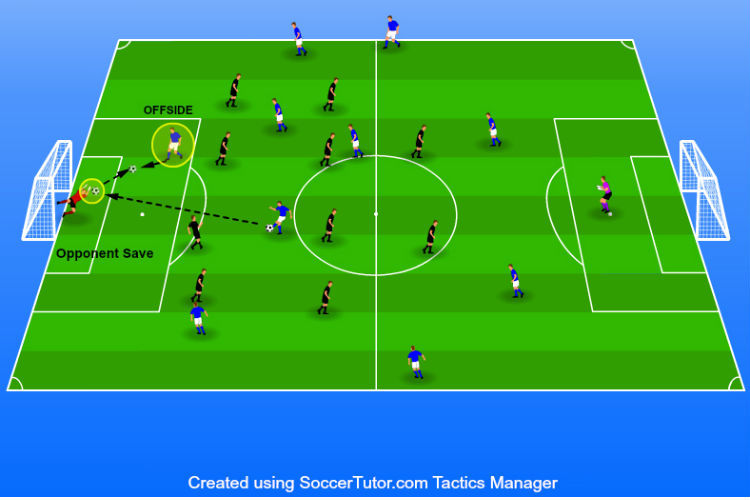
So what this essentially means is, a player in an offside position who was totally passive to the ongoing play, commits an offence if he gets involved subsequently in any indirect way that influences the play.
Makes sense, though, right?
Otherwise, you could just plant a player in an offside position who just uses feints or other moves to distract or trick the opposing keeper, or any of their defenders who are going for the ball.
That’s just as effective as getting a free pass on offsides for a ball-playing player.
The Exceptions
Of course, there are exceptions…
Any rule that generates this much controversy and confusion is bound to have exceptions.
And offsides in soccer are no exception, either.
An attacking player does not commit an offence when they receive the ball directly from:
1. Goal kicks
2. Corner kicks
3. Throw-ins
4. Dropped balls
Also, it’s not an offside offence if the attacking player plays a ball that was last deliberately played by an opponent.
This is different from saves and deflections we mentioned in the previous section. Those lead to offences.
What this means is an offside player doesn’t commit an offence in situations like:
• Latching onto the ball after a deliberate tackle by an opponent
• Latching onto a misplaced pass from an opponent
Also, there are “exceptions” that follow naturally from the rules for offside positioning and offences.
For example, an attacking player isn’t offside if:
• They are involved with or influence play in any way from their own half
• They receive a backwards pass. For example, from a teammate closer to the opposition goal line than them.
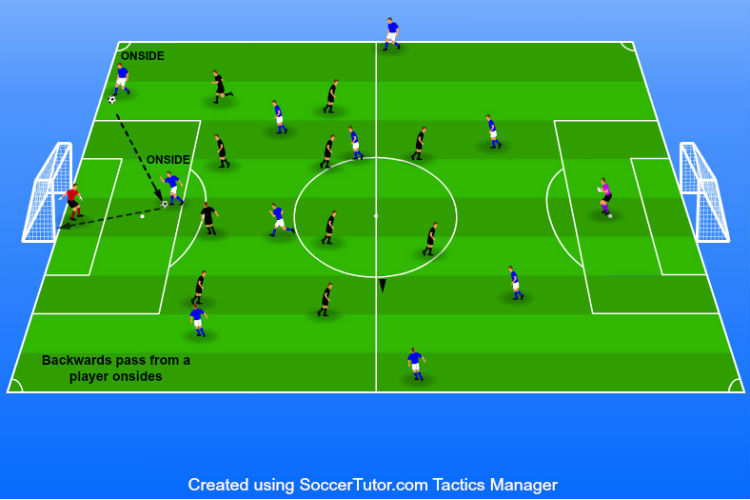
• If only their arms or hands are across the “offside line”
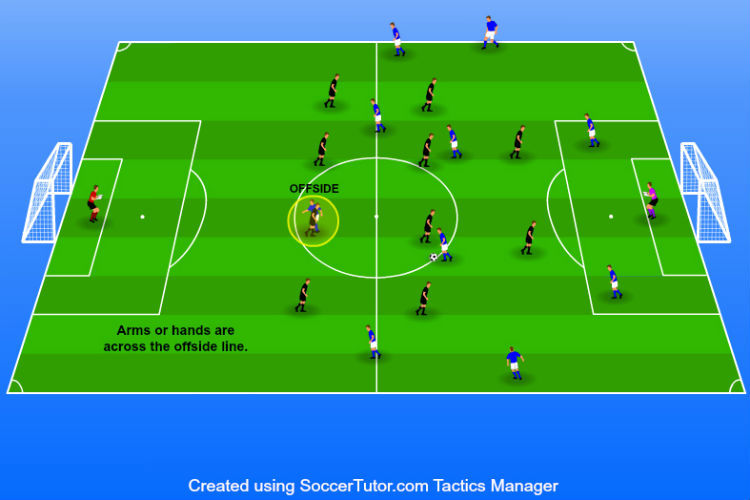
Being Offside is Not a Foul
This is a very common misconception among fans.
Like we explained earlier, a player commits no foul just being in an offside position.
In fact, even if a player’s actions result in them being flagged for an offside offence, it isn’t technically a foul or a misconduct deserving a caution.
An offside offence only ever results in the awarding of an indirect free-kick to the opposition.
The only time that an offside offence warrants a card from the referee is if a player uses underhand tactics. For example, a player trying to deceive the opposition about their offside position by leaving the pitch.
Another thing to note is that the referee can overrule the linesmen's decision to flag a player offside.
This sometimes happens when the referee is in a better position to observe what has actually occurred in the play, and make a more informed decision than their linesmen, who are primarily focussed on the positioning of the players.
Now, for a little history…
To truly “get” the offside rule, you should know its origins, or in other words, why it was conceived in the first place.
The True Origins of Offsides in Soccer
The origins of offsides in soccer can actually be traced all the way back to the beginnings of the modern game. When it was taking its first tentative steps towards becoming a formalised sport with an agreed upon set of rules.
Versions of the rule were already being used in the early to mid-nineteenth century.
The first version of it was adopted in the English public school system, which, believe it or not, had a big hand in shaping the modern game as it is today.
Goal Hanging – The Whole Reason Why Offsides Exist
The offside rule was brought in primarily to make the scoring of goals a challenging endeavour.
At the time, the concept of “goal hanging” was fairly popular. One or more of the attacking players would always be planted right next to the opposition’s goal.
The ball would simply be hoofed to them by their teammates and the goal hanger could just take on the keeper and score.
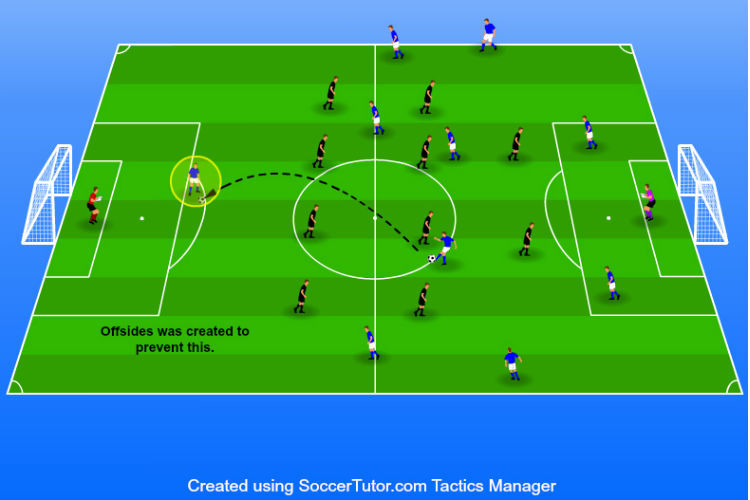
In light of the current state of the game, you can imagine how ridiculous the strategy is.
Something had to be done to better the flow of games and make them more competitive.
And so the concept of offsides in soccer was brought about…
The Evolution of the Offside Rule
In some of the early versions of the rule, a player was judged to be offside if they were simply standing in front of the ball. Which is actually very similar to how the rule is interpreted in modern-day rugby.
Indeed, the earliest standard rule set, the 1863 Laws of the Game, stated that only goal kicks were allowed to be passed forward.
This meant that players had to advance up the pitch very much like how they do in rugby. As you can imagine, games were usually low scoring affairs.
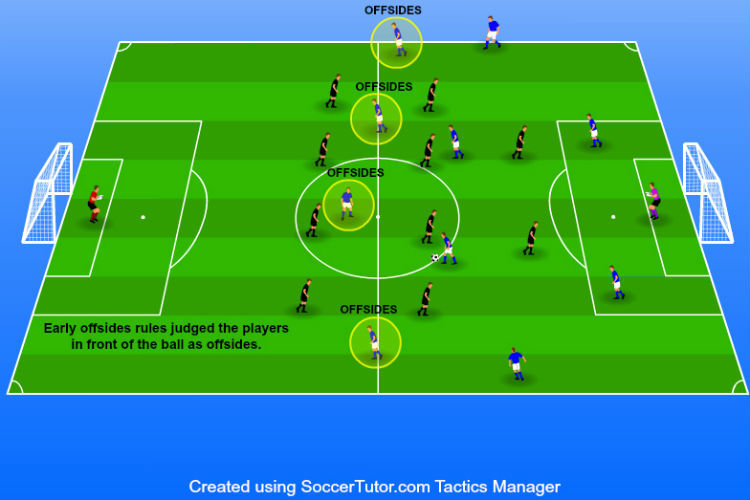
Over the decades several adjustments were made to try and balance fair play and the entertainment value of speedy, uninterrupted attack moves that fans craved so much.
In 1990, the offside rule was given the form it essentially retains to date – that a player is onside and therefore in a legal position if they are in line and level with the opposition’s second-to-last player.
This did help to encourage attacking play, resulting in games having more thrill and entertainment to them…
But it also resulted in the problem that sill continues to plague the rule – difficult decisions.
The decisions over whether a player was adjudged to be offside became harder to moderate due to the rule change.
The Brighter Side
On the other hand, though, the rule also sparked some creativity in tactics.
And a prime example of this is the offside trap used by defenders.
So while the rule in itself might be a pain for players and fans alike to contend with in terms of the difficulty of the judgment involved, it has also enriched the game so much in terms of policing fairness and the variety of tactics in play nowadays.
Interesting Takeaways from the Offside Rule
You’ve already seen some of the subtleties to offsides in soccer in the sections above.
Once you really begin to get offsides in soccer, though, you begin to see the game in a whole new light. You can be blown away by some of the interpretations and the possibilities resulting from them.
You also begin to truly appreciate how difficult it really is for the referees and linesmen.
There’s a reason why FIFA has a 37-page long document on the offside rule!
Let’s consider a few of these cases and kill two birds with one stone…
Reinforcing the concept of offsides in soccer, and get you thinking more from a tactical POV…
1. Remember how a player must be in the opposing half to be offside? That means against really dominant opposition playing a very high line, speedy attackers can run onto a ball played from within their own half while already behind the opposition backline to run a devastating counter.
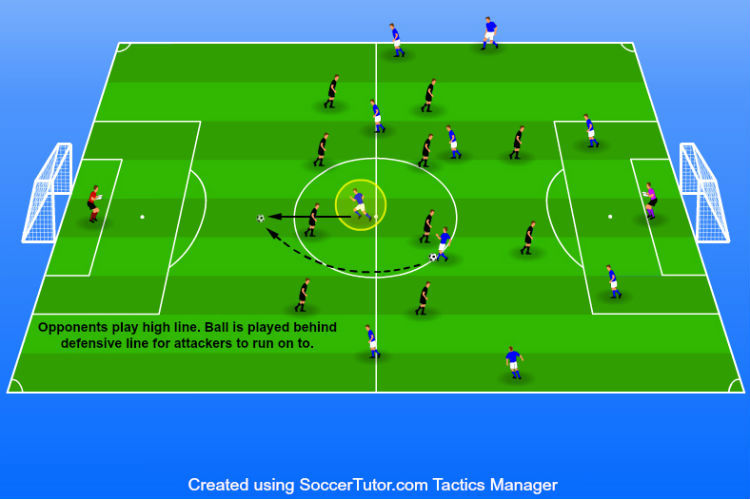
2. It doesn’t matter that the ball played through to the attacker touches or ricochets off a defender. The player is judged onside or offside depending on when the pass first took place, not from the last touch.
3. If a ball is played through to the attacker and the defender attempts to clear it but mistakenly plays it or slices it to the attacker who’s run took them into an offside position, it is not offside as the defender played it to them, even if inadvertently.
4. If an attempted through ball is recovered by a defender, an attacking player in an offside position may come and win it back off them without being ruled offside. This is generally only if the defender has had enough time to control the ball. And the returning player must be far enough away not to influence the defender’s play from their position.
5. If an opposition defender ends up off the pitch for whatever reason, they’re still counted for the offside rule. That means a defender who ends up behind their goal line still counts as one of the two defenders that the opposition’s attacker needs to be level with or in front of when the ball is played.
6. The team on the attack can really milk the exceptions in case of goal-kicks and throw-ins in particular. An excellent example of this is Stoke City’s use of throw-in specialist Rory Delap in offence.
7. The last two opposition players required to be level with or in front of the attacker in question need not include the goalkeeper. Most people think of the rule pertaining to just the last opposition defender, not considering the goalkeeper, which is wrong.
8. You’re flagged only if you’re in an offside position at the time the ball is played by a teammate. This means timing your run from behind the second last opponent is paramount. And it’s been used to brilliant effect by great players.
But perhaps the most creative interpretation and use of offsides in soccer is the offside trap.
The Offside Dance between Attackers and Defenders
The offside rule was devised to encourage teams to play soccer and not simply lump the ball forward to a striker hanging around the opponent’s goal.
Now with offsides in soccer, timing is key for attackers to make their final runs.
Play the ball too slowly and the intended recipient will have strayed offside. Play it too quick and the player will not be in the right position or wouldn’t have anticipated it.
So players need to work well together to know how to move up the field into dangerous positions without straying offside.
A canny attacker will know exactly when to make their run to get away from the defender and remain onside to receive their team mate’s pass.
But equally under pressure is the passer of the ball to the final attacker.
A smart midfielder must not only spot the spaces in the opposition defence to thread passes. They must get the timing of the release just right to accommodate the attacker’s run with their position in mind.
On top of that, the weight of the pass must be just right to give the attacker enough time to meet it both before the keeper and ahead of the chasing defence.
Orchestrating all this takes a lot of training together to understand each other’s movements, speed, and instincts.
Likewise, defenders have their own tactic to trap their marks offside and arrest attacking moves.
And it’s known as the offside trap…
The Offside Trap
The idea essentially is to force the attackers into an offside position at exactly the point their teammates try to play them in.
Upon seeing an opposing player looking to play a forward pass to their striker, the team’s defenders step up as one so that the striker is offside position before the pass is released.
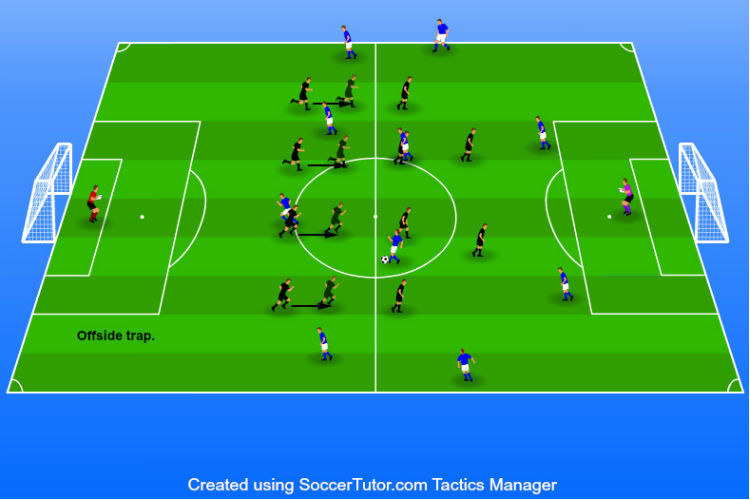
It’s obviously a very risky move…
Get your timing wrong and with respect to your fellow defenders, and you could play the attacker onside, leaving them one-on-one with the goalkeeper.
However, a well-oiled team that works as a unit can make this defensive manoeuvre a great success.
And it’s a thing of beauty when defenders get it just right.
The Final Word on Offsides in Soccer
One of the most misunderstood laws of the game, the offside rule is remarkably simple on paper.
And even if it’s a bit complex, with its intricacies in practice and the endless contentious decisions, it’s still great.
The rule evens the playing field for defenders and attackers.
And it also strikes a good balance between entertainment value for spectators and keeping the game challenging for the players.
Besides, it’s sprung up so many interesting tactics for coaches and playmakers to play with, enriching the game for everyone.
Still, it’s hard to discount how annoying offsides in soccer can really get.
So let’s just acknowledge our love-hate relationship with the rule, and embrace it for what it is.
Because now that you understand it, you can try and make use of it, rather than just resent it.

